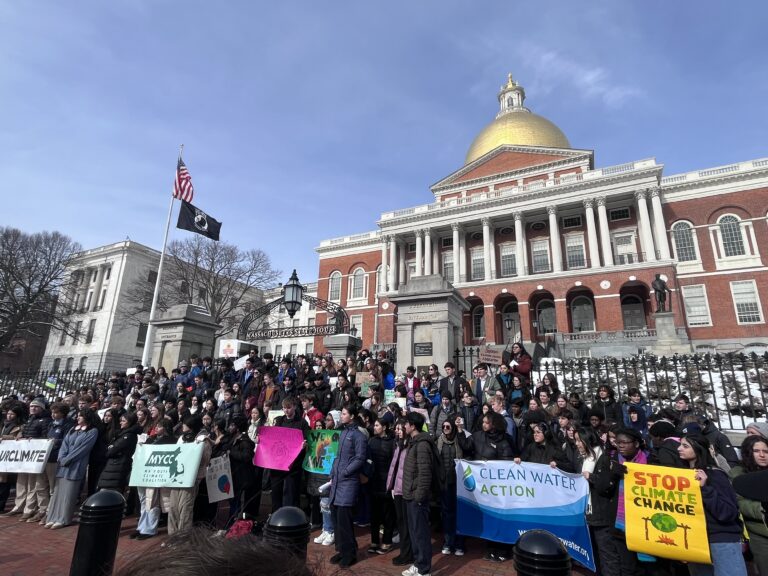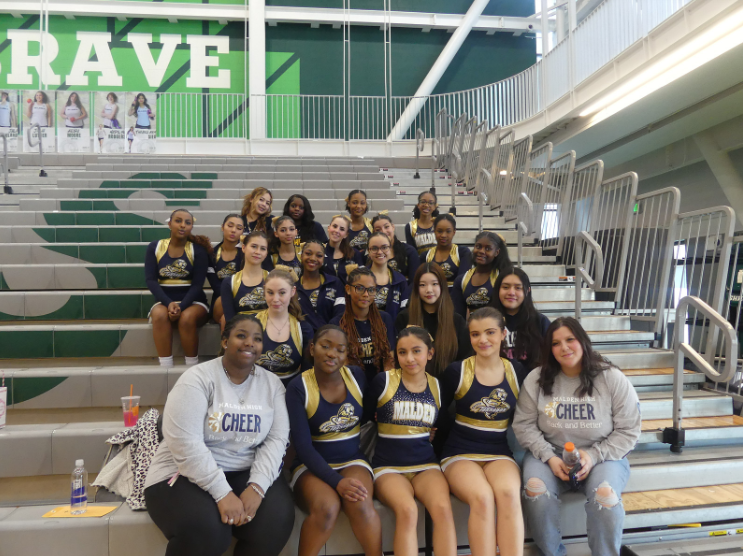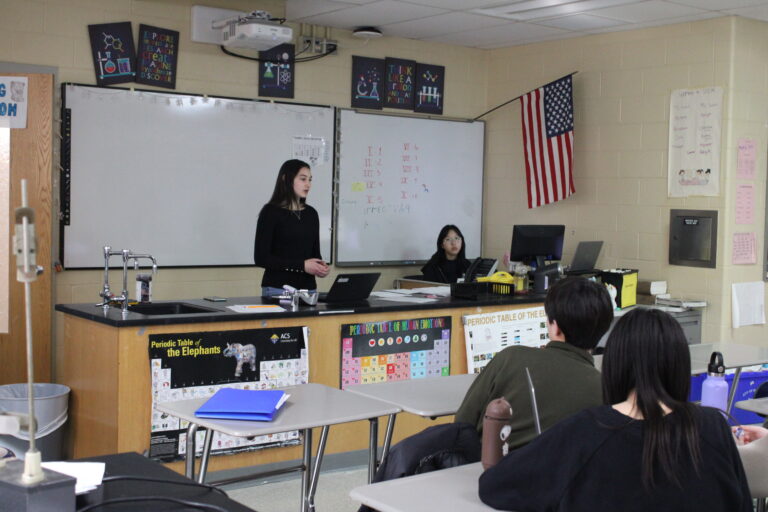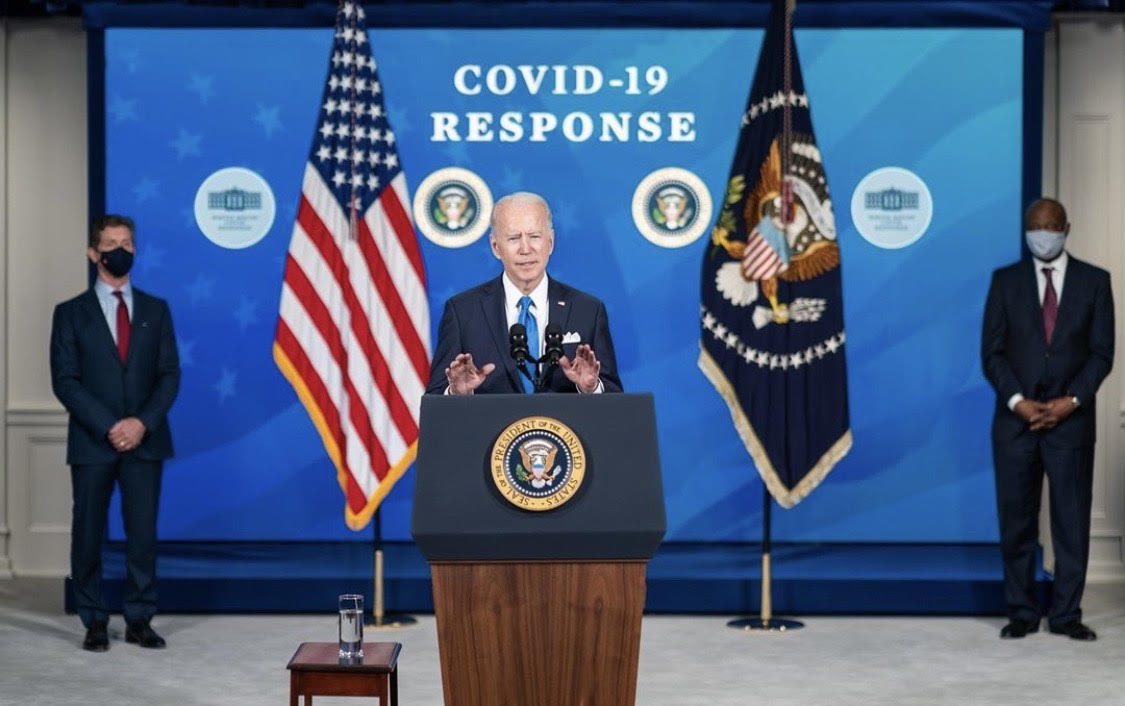
As of today, Joe Biden has been in office as the 46th President of the United States alongside Vice-President Kamala Harris for 55 full days. His administration has been off to a strong start, already addressing various issues as well as putting plans in place regarding the COVID-19 pandemic. But what exactly has happened since his presidential inauguration on January 20th?
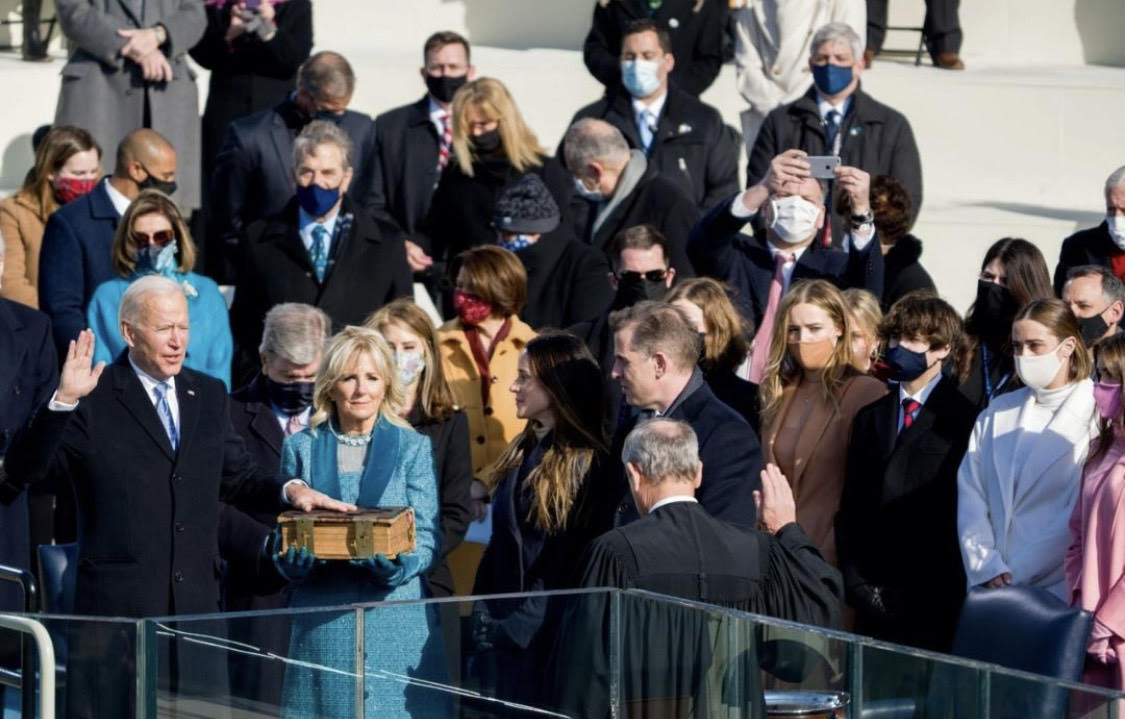
Major Actions & Policy Reversals
Just on his first day, Biden signed a historic 17 executive actions, 15 of which were executive orders. They were all major reversals of former president Donald Trump’s plans and policies previously in place. Here are a couple of the major actions he took:
– Rejoined the World Health Organization and the Paris Climate Accord
– Reversed Trump’s travel ban from several Muslim-majority countries
– Repealed permits for the Keystone XL Pipeline and put a temporary prohibition on gas and oil leasing in the Arctic National Wildlife Refuge
Since then, Biden has also revoked:
– Trump’s previous abortion policy (which restricted access to abortions)
– The ban on transgender people serving in the millitary
– The 1776 Commission, which was the Trump administration’s response to the New York Times 1619 Project
With all of the previous policies he has reversed, what are some actions that Biden plans on taking moving forwards?
For one, the administration is set to launch a whole-government initiative to push for more racial equity in America. In a White House memorandum issued on January 26th (“Condemning and Combating Racism, Xenophobia, and Intolerance Against Asian Americans and Pacific Islanders in the United States”), the administration talked about the recent rise in xenophobia and harassment against Asian-Americans during the pandemic, which many argue has originated in part by previous president Trump’s past references to the ‘China virus’. The memorandum urged the U.S. Department of Justice to help take action to prevent harassment and hate crimes against these communities moving forwards.
On February 14th, Biden also called on Congress to enact “common sense” gun laws. These gun laws would make background checks a requirement for all gun purchases, as well as work to ban assault weapons as a whole. In response to the current rise in gun violence in the United States, Biden’s hope is to make schools and communities safer by having these laws implemented.
Biden’s Cabinet
The Biden administration has succeeded to have the most racially diverse Cabinet in the history of the United States. This is the racial breakdown of Biden’s Cabinet:
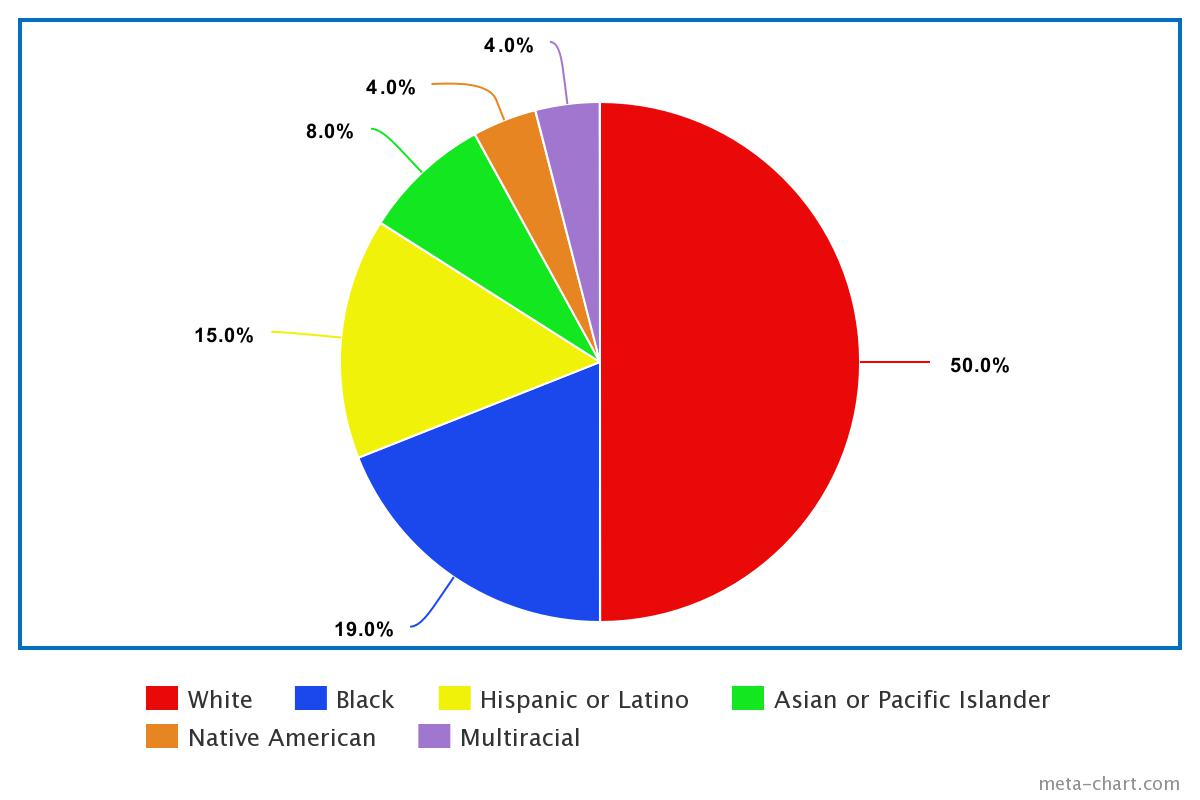
50% White
19% Black
15% Hispanic or Latino
8% Asian or Pacific Islander
4% Native American
4% Multiracial
The population of the United States is about 61% white, so percentage-wise, people of color seem to be well represented in Biden’s Cabinet. Although some groups are still underrepresented compared to the country at large, his Cabinet comes pretty close to the actual racial breakdown of the United States.
Furthermore, 54% of Biden’s Cabinet is represented by men, while women make up 46%. Compared to the United States’ population of 49% men and 51% women, women are slightly underrepresented. However, when contrasted with previous president Trump’s Cabinet of 83% men and a mere 17% women, it is clear that the Biden administration has made a tremendous effort to effectively represent the United States’ population.
Former mayor of South Bend, Indiana Pete Buttigieg is the youngest member of Biden’s Cabinet at 39 years old. Previously running for president in the 2020 Democratic primaries, Buttigieg is the first gay man to win Senate confirmation to run a Cabinet department. On February 2nd, he was also elected as the United States Secretary of Transportation.
COVID-19
Joe Biden held his first prime-time address to the nation on March 11th, 2021. In his address, he focused on the COVID-19 pandemic and the plans his administration is setting in place to hopefully have everything back to some extent of “normal” by his goal, July 4th 2021.
Regarding the pandemic, Biden urged everyone to continue wearing masks, social distancing, and most importantly, “to do their part.” He emphasized that “beating the virus and getting back to normal depends on national unity,” and if everyone continues to follow the guidelines, we may be able to beat COVID-19 after all.

During this speech, Biden also claimed that “as of now, total deaths in America, 527,726. [That is] more deaths than in World War I, World War II, the Vietnam War and 9/11 combined,” which was later fact-checked as incorrect.
Biden signed the $1.9 trillion coronavirus relief package earlier that same afternoon. This relief package will put about $20 billion into COVID-19 vaccinations, $25 billion into rental and utility assistance, and $350 billion into state, local, and tribal relief. Direct payments of up to $1,400 will be sent to most Americans in the form of direct deposits. Additionally, a $300 per week unemployment insurance boost until September 6th, along with expanding the child tax credit for a year.
One of the most important things Biden mentioned in his prime-time address was the fact that he will direct all states to make every adult eligible for the COVID-19 vaccines by May 1st. As of Thursday, he said that 65% of Americans over the age of 65 had already received their first vaccination, and the administration is currently working on distributing more of them so that most adults will hopefully be able to be vaccinated relatively soon.
It is predicted that there will be enough vaccine supply for every adult in America by the end of May.
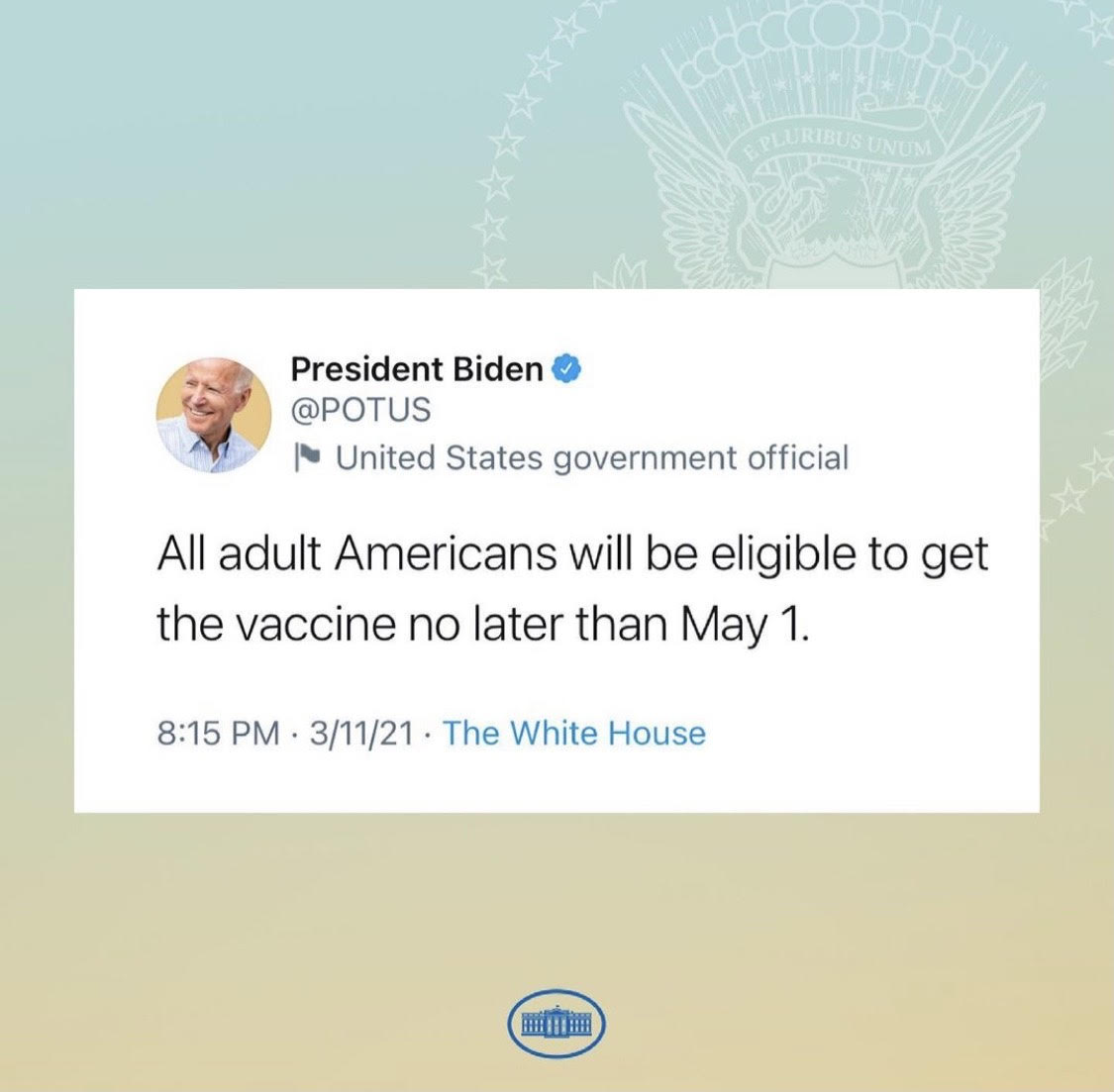
The Presidential News Conference (that has not yet happened)
With everything that has happened so far, there is still something important the administration has yet to do. After being in office for over 50 days, Biden still has not given a formal presidential news conference.
Normally, soon after a president is elected, they hold a news conference in which they are asked numerous questions by the press regarding their policies, plans for the future, and almost anything else appropriate for that matter. These conferences are important in allowing the public to be fully up to date with the president’s plans, as well as to question them about specific policies or standings. Additionally, these conferences have the ability to hold presidents accountable for their actions since they have to answer questions in an uncontrolled environment.
Former president Barack Obama gave his first conference 20 days after his inauguration, and Donald Trump only waited about a week.
Although Biden has answered some questions from reporters during press briefings and given a few speeches regarding the COVID-19 pandemic, the public has not yet had a chance to “officially” question him. This has brought up a lot of suspicion, and many people are asking the simple question: why?
Unfortunately, although many people have their own speculations, it is not known why Biden has waited this long. According to The Washington Post, towards the beginning of March, White House press secretary Jen Psaki said that Biden would hold his first news conference before the end of the month, although it was not specified when.
Conclusion
Although this is only a very brief overview of some of the Biden administration’s actions in their first 55 days, things are definitely getting done and beginning to happen. Of the 61 actions that Biden promised he would carry out in his first 100 days in office, 16 of them have been fully completed, while 38 of them are still in progress. The rest are yet to be started, but considering the ambitious agenda he has planned regarding these actions, he still has time to finish carrying them out.
Currently, getting COVID-19 under control seems to be at the top of the administration’s checklist. If everything goes as planned, vaccines will start rolling out beginning in May, and the country will be back to a new normal hopefully sooner than later.
As Biden said towards the end of his recent prime-time address, “There is hope and light and better days ahead.”

